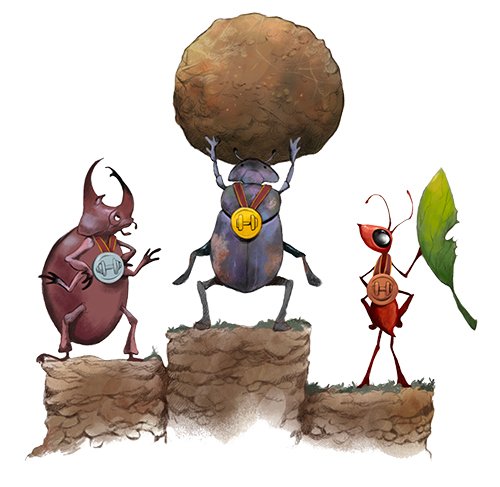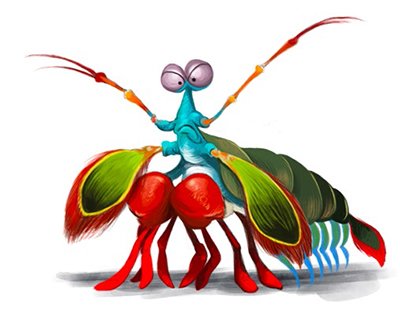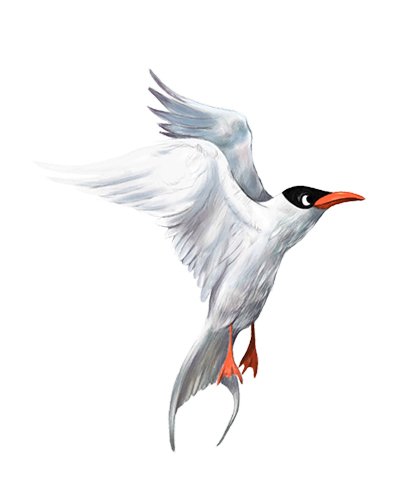Animal Olympics
These animal “athletes” might take home the gold, but the glory goes to their Creator.
Every four years, the booming timpani drums, clashing cymbals, and blaring trumpet fanfares announce the spectacle and the pageantry of the summer Olympic games. This year in Tokyo, competitors from all over the globe assemble to determine who is the fastest, the nimblest, and the strongest of athletes.
Records topple, crowds cheer, and national anthems raise goosebumps.
But not all incredible feats of strength, speed, and endurance take place in a stadium on the other side of the world. of the strongest and quickest of competitors aren’t at the games at all. They’re much, much closer—in fact, some are right outside your window. We’re talking about animals—super strong, super fast, super agile animals that point to the ingenuity and care of their Creator. God provides his creatures with the skills and characteristics they need to thrive in a fallen world.
While these “athletes” don’t win medals, they do set the gold standard of the animal world. And they certainly show that God’s glory is all over the earth (Psalm 57:11). But in an animal Olympics, which critters might take the top prizes? There’s only one way to find out. Let the games begin!
Weightlifting
Sometimes, strongest doesn’t mean biggest. You might think the brawniest animal would be something like the elephant. Turns out you have to look much closer to the ground. God packed some power in mighty mini creatures to help them carry the loads of the world on their shoulders . . . if they had shoulders, that is.

Art by Dave Mottram
Gold: Dung Beetle
1,141 times their bodyweight
If you had the bodybuilding power of the half-inch dung beetle, you could lift an 80-ton bulldozer. But these humble dung rollers take their strength in stride as they scuttle along the ground, pushing large balls of dung to store for eating later.
Silver: Rhinoceros Beetle
Over 100 times their bodyweight
“Rhino” is right for these beetles, but not just for their horns. They’re also quite powerful and can reach over 6 inches (15 cm) in length. If you had their strength, you could bench press a train passenger car.
Bronze: Leafcutter Ant
Up to 50 times their bodyweight
Imagine lifting a truck—with your teeth. That’s how impressive these little ants are as they carry leaves back to their colony. It’s no wonder the Bible tells us to look to ants as our inspiration for overcoming laziness (Proverbs 6:6).
Did You Know?
If you’re looking for the strongest non-insect, consider the gorilla. These hairy apes may be able to move up to 4,400 lbs (2,000 kg), which is around 10 times their body weight. That means your car would be fair game for weightlifting at a gorrilla gym.
100-Meter Dash
Not every animal needs to be fast to survive (just look at the sloth). But for many animals, speed is of the essence to catch their next meal—or to avoid being someone else’s next meal. God packed these animals with features to turn on the afterburners when they need to. Who runs away with the gold?
Gold: Mexican Free-Tailed Bat
Up to 100 mph (160 km/h)
Many scientists believe the Mexican free-tailed bat has the fastest horizontal flying speed of any animal.
Cheetah
Up to 75 mph
Horse
Up to 30 mph
Human
Up to 27 mph
100-Meter Freestyle
God gave marine animals some incredible features that allow them to zip through the water at breathtaking speeds. And some of them can even zip out of the water as well. These animals truly are medal worthy.

Art by Dave Mottram
Gold: Black Marlin
Up to 82 mph (132 km/h)
The black marlin has been recorded unspooling fishing line at a staggering speed. Its long bill and torpedo-like body gives it the perfect shape to slice through the waters of the Pacific and Indian Oceans.
Silver: Sailfish
Up to 68 mph (109 km/h)
Technically, the sailfish only achieves its rocket speed when it leaps out of the water. (But in freestyle, all swimming styles count.) This iconic dorsal fin only adds to its flair as the fish uses the sail to stabilize its massive bill while hunting prey.
Bronze: California Sea Lion
Up to 25 mph (40 km/h)
Sea lions have to dodge hungry orcas and great white sharks. So a little burst of speed here and there isn’t a bad thing. And it helps that they can jump out on land.

Art by Dave Mottram
Runner Up
The gentoo penguin is no speed slouch. The aquatic birds can swim at speeds of up to 22 mph (35 km/h).
Long Jump
Measuring the longest jump for animals is tricky business. Do you measure the absolute length of the jump? Or do you measure in proportion to their body size? For the animal Olympics, we’ll do a bit of both. But either way, when you think about how far something as tiny as a flea can jump, you can only be in awe of the Creator who gave it legs to stand (and jump) on.
Gold: Snow Leopard
Up to 50 feet (15m)
Other animals may jump farther relative to their body size, but the snow leopard takes the prize for absolute distance, jumping longer than a school bus, even in slippery conditions.
Silver: Red Kangaroo
Up to 30 feet (9 m)
Bronze: Flea
200 times their body length
Runner Up
Tree frogs can leap 43 times their own body length, making them the jumpiest of vertebrates (animals with a backbone).
Boxing/Martial Arts
Some animals have a mighty wallop. With one foot or claw, they can crack through shells to get food, run away from danger, or protect themselves from predators. In a fallen world, God knew some of his animals would need a little fighting force.

Art by Dave Mottram
Gold: Red Kangaroo
Kick Force: 759 lbs (3,376 newtons)
There’s a reason red kangaroos do so well in those jumping competitions: they have quite the push off on those big feet. It’s no wonder dingoes and other predators know to keep a wide berth.
Silver: Ostrich

Art by Dave Mottram
Kick Force: 450 lbs (2,000 newtons)
The ostrich’s strong legs can hurtle the bird forward at speeds of up to 43 mph (70 km/h). That’s not quite fast enough to medal in the 100-meter dash, but it’s plenty fast enough to escape predators in Africa.
Bronze: Mantis Shrimp

Art by Dave Mottram
Punch Force: 337 lbs (1,500 newtons)
Pound for pound, the peacock mantis shrimp packs a punch like no other animal. These creatures use their powerful forelimbs to stun prey, and the movement is so fast it creates heat, light, and sound.
Runner Up

Art by Dave Mottram
A zebras’ strength really kicks in with its powerful hindquarters. It can kick with enough force to kill a male African lion.
Diving
At most Olympic games, diving is about twists, turns, and as little splash as possible. But for the animal Olympics, we’re going much deeper, down to the depths of the ocean. Surviving under all that weight of water isn’t easy, but God equipped these explorers with just the right features to take the plunge.
Gold: Cuvier’s Beaked Whale
Depth: 9,874 feet (2,992 m)
It took 3 hours and 42 minutes (a record in itself), but one Cuvier’s beaked whale shocked scientists with its impressive dive. Before they take the plunge, these whales blast out all their air to protect themselves from the deep-sea pressure. They can even shut down their digestion, kidneys, and livers to save on oxygen.
Silver: Elephant Seal
Depth: 7,835 feet (2,388 m)
When you gotta eat, you gotta eat. And for the elephant seal, that can mean a deep dive to chomp on skates, rays, and squid. Because the seals have a large volume of blood for their body size, they can also store a large volume of oxygen when they submerge.
Bronze: Emperor Penguin
Depth: 1,853 feet (535 m)
Emperor penguins may not have the stamina of a whale or seal for diving, but for their size (and for being a bird), these avian wonders hold their own. Unlike most birds that have air-filled bones, these penguins have solid ones to handle the pressure of the ocean. They can also slow their heart rate to stay under longer.
World Record Human Free Dive
Depth: 702 feet
High Jump
Sometimes animals have to get the jump on their food by leaping high into the air, and at other times they need to scale cliffs and rocks. Either way, God packed some springy legs into creatures of all sizes, and that’s why they can take a leap toward the gold.

Art by Dave Mottram
Gold: Flea
150 times their body height
We really have to acknowledge this tiny critter with the not-so-tiny jump. Here’s another way to think of its jumping prowess: if you could jump as high as a flea in comparison to your body size, you could easily clear a 60-story building.

Art by Dave Mottram
Silver: Dolphin
Height: 20 feet (6 m) above the water
Plenty of sea animals can leap above the waves, including huge whales and shimmery flying fish, but few can gain the height of playful dolphins. They may not have quite the altitude-to-body-size feats of a flea, but you can’t watch them without doing a little jump for joy yourself.

Art by Dave Mottram
Bronze: Impala
Height: 10 feet (3 m)
Various types of antelope have a spring in their step to help them navigate rocky terrain. And considering they’re hunted by a variety of carnivores on the savannah, staying a bounce ahead isn’t a bad thing.
Did You Know?
While some animals may dive pretty well, they don’t come close to marine creatures that live deep, deep in the sea. Amphipods (shrimp) have been found as deep as 6.6 miles (10,700 m) beneath the surface in the Mariana Trench.
Marathon
Car trips can feel like they take forever when you’re driving across the country. But your longest car trip takes a back seat to the distance some animals travel as they migrate. God designed them to get to the right place at just the right time year after year.

Art by Dave Mottram
Gold: Arctic Tern
50,000 miles (80,000 km) per year
When it comes to mileage, no animal turns the odometer as much as the plucky arctic tern. These birds travel from the Arctic to Antarctica and back each year. And with a typical lifespan of 30 years, that’s a lot of miles to put on those wings.

Art by Dave Mottram
Silver: Eastern Gray Whale
Up to 14,000 miles (22,500 km) per year
In 2015, an eastern gray whale snatched the whale migration record from the humpback whale during a yearlong trip from Russian waters to Mexico and back. That’s no small feat for an animal that’s longer than a school bus.

Art by Dave Mottram
Bronze: Globe Skimmer Dragonfly
11,200 miles (18,000 km) per year
Some creatures may go farther than the tiny globe skimmer, but few make a more impressive journey. These dragonflies take a truly incredible journey each year from southern India to southern Africa and back.
Did You Know?
Adélie penguins can’t fly, but that doesn’t mean they stay put. Each year, these nomadic birds swim and waddle over 8,000 miles (13,000 km) between their breeding and feeding grounds.
Answers Magazine
July–September 2021
Recommended Resources

Answers in Genesis is an apologetics ministry, dedicated to helping Christians defend their faith and proclaim the good news of Jesus Christ.
- Customer Service 800.778.3390
- © 2024 Answers in Genesis






